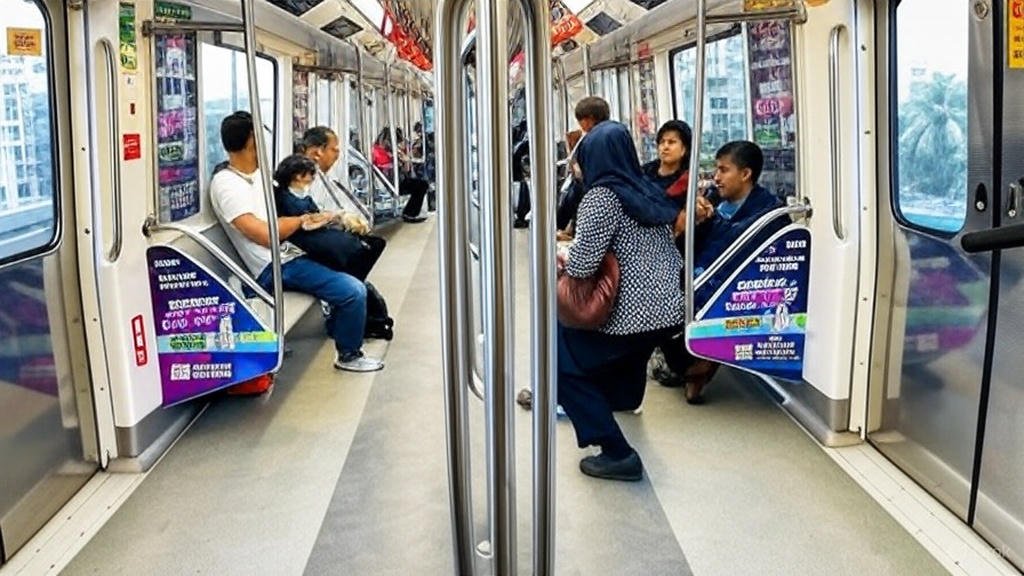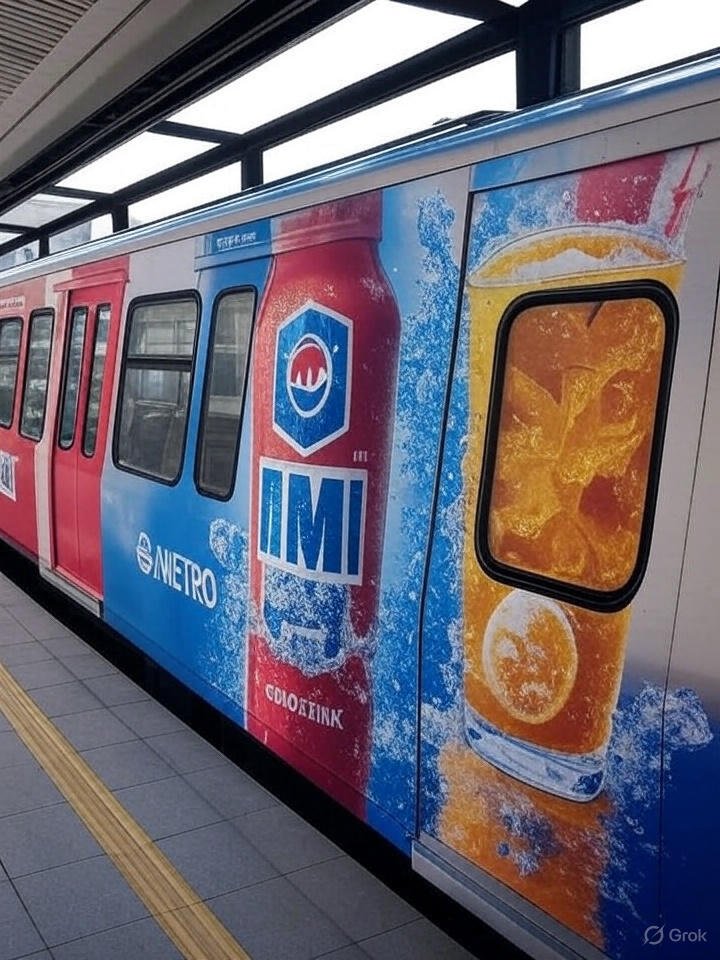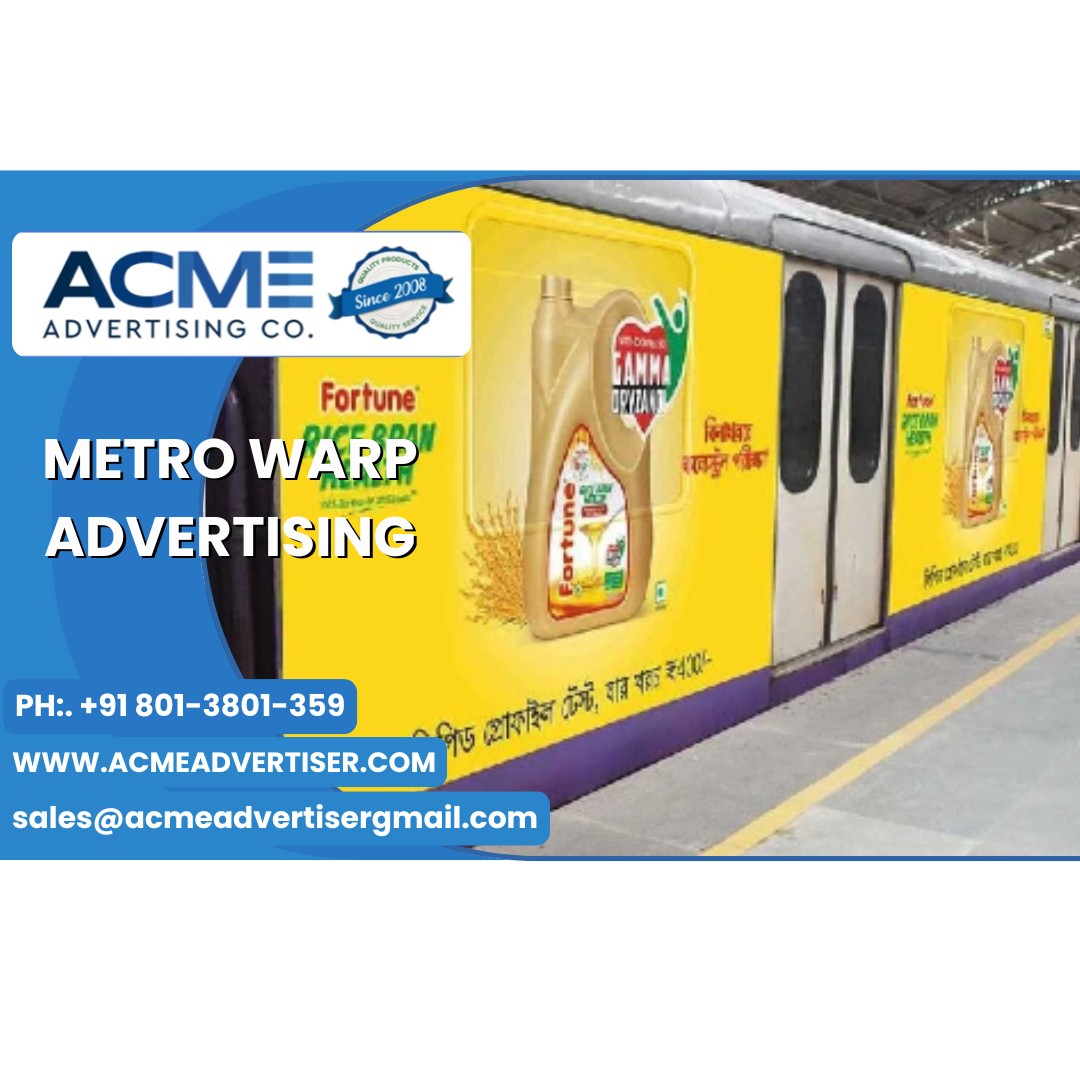Every day, millions of eyes scan the same metro ads platforms, sit in the same coaches, and wait at the same underground corridors. In a city pulsing with motion, these high-footfall transit zones have become the new billboards of influence. That’s where metro branding comes in — not as just another ad format, but as a game-changer for city campaigns looking to leave a lasting impression.
#1 What Is Metro ads Branding?
Metro branding refers to the strategic placement of advertisements within metro stations, inside trains, on train wraps, stairways, pillars, and even ticket counters. It’s a form of transit advertising that captures attention in a controlled environment where dwell time is high and distractions are fewer.
Why Brands Are Turning to Metro Branding in Cities

Massive Daily Footfall: Metro systems in cities like Delhi, Mumbai, Bangalore, and Hyderabad cater to hundreds of thousands to millions of commuters daily. That’s guaranteed, repeat visibility — something traditional hoardings or digital ads can’t promise in the same way.
Hyper-Targeted Urban Reach: With metro routes divided into zones that pass through commercial hubs, residential areas, tech parks, and shopping districts, brands can target specific demographics more effectively. Want to reach students? Advertise near university stations. Need to tap into office-goers? Target the corporate corridors.
Non-Intrusive, But Unmissable: Unlike online pop-up ads or noisy video commercials, metro branding doesn’t interrupt the commuter’s experience. It blends into the environment, yet stays top of mind thanks to its large-scale, repetitive exposure.
Cost-Effective with Long-Term Visibility: Unlike digital ads that disappear after a click or a scroll, metro branding remains visible 24/7 for the duration of your campaign. It’s cost-effective, especially when spread across multiple stations or train lines.
Key Formats in Metro ads Branding

- Train Wraps – Full exterior branding of a metro coach for complete visual dominance
- Inside Train Panels – Seat-back and overhead ad placements
- Platform Screen Doors & Pillars – High-impact areas where people wait
- Ticket Counters and Entry Gates – Catch attention before and after the ride
- Wall Murals and Wraps – Long-form storytelling formats
Metro ads Branding in Action: Real-World Impact
From political parties to FMCG brands and fintech startups — every sector is leveraging metro branding. For example, during state elections, metro stations near government buildings are often flooded with political banners. Consumer brands use it to build trust through repeat exposure, especially for product launches or public awareness campaigns.
How Metro ads Branding Supports Integrated City Campaigns
In an era where consumers see thousands of ads every day, integrated marketing is essential. Metro ads branding fits seamlessly into OOH campaigns, amplifying digital efforts and creating real-world touchpoints. It also supports hyper-local promotions — for example, advertising a mall on the nearest metro line or promoting a restaurant near a busy station.
What Makes Metro ads Branding a Game-Changer?
- Unmatched reach in urban environments
- High dwell time for deeper brand recall
- Flexibility in formats, zones, and campaign duration
- Stronger ROI compared to high-cost TV or digital CPMs
- Consistency in visibility, unaffected by weather, ad blockers, or fast-forward buttons
Final Thoughts: The Future Is Moving — So Should Your Ads
Metro branding is no longer just an option; it’s a strategic advantage in today’s fast-paced, hyper-connected cities. If your city campaign isn’t riding the metro yet, it’s missing out on one of the most immersive and result-oriented branding tools available.
Whether you’re a startup, a government body, or an established brand, metro advertising offers a unique way to move with the people, speak in their space, and stay in their mind.

